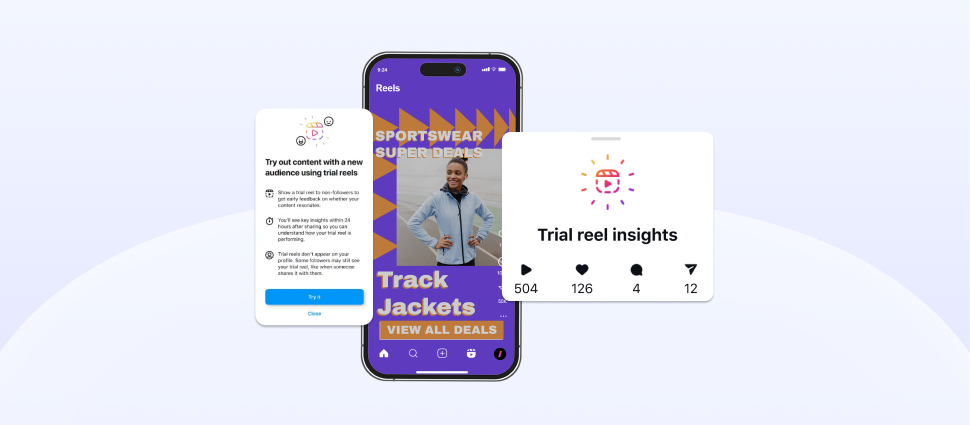

E-commerce has opened up new opportunities for businesses to reach more customers and expand into unlimited markets. New channels and innovations are introduced every year, providing many benefits to the (online) retail industry. However, this also comes with some challenges, such as channel cannibalisation and competition. Read along to find out what exactly channel cannibalisation is, how it happens, and what strategies to implement to help you avoid it.
What is channel cannibalisation?
Channel cannibalisation, also known as channel conflict or substitution effect, takes place when companies introduce new sales or distribution channels that unintentionally compete against each other instead of complementing each other. In other words, a company may end up serving its existing customers through a new channel at the expense of its current channels, leading to a decrease in revenue, margin, or both. For example, if a company starts selling its products on a new (third party) e-commerce platform while still relying on its traditional retail stores, it risks losing business from customers who switch to the (third-party) online channel.
How does channel cannibalisation happen?
Channel cannibalisation happens when a new channel is not integrated into a company’s overall sales strategy and customer experience. Some causes of channel cannibalisation include:
Overlapping targets. When multiple channels target the same customer segments and offer similar products, they may end up stealing each other’s sales instead of expanding the customer base. This is often the case when different channels are managed by different teams or have different performance metrics.
Different pricing. When a new channel offers lower prices or better promotions than existing channels, customers may shift their purchases to the new channel instead of using the old ones. This may indicate a lack of pricing alignment or coordination among the channels.
Conflicting messaging. When a new channel communicates a different brand message or value proposition than existing channels, customers may get confused or question the consistency of the brand. This can damage brand image and harm long-term brand positioning.
Inconsistent customer experience. When a new channel offers a different or inferior customer experience than existing channels, customers may prefer one channel over the other or switch to competitors. This highlights the importance of an omni-channel integration.
An omni-channel approach
An omnichannel approach strives to provide consumers with a seamless and consistent experience across all channels. This approach acknowledges the unique strengths and weaknesses of each channel, preventing competition between them and ultimately boosting performance. Here are some strategies to avoid channel cannibalisation and achieve an omni-channel strategy:
Define clear channel roles and objectives. Before launching a new channel or adjusting existing ones, make sure you have a clear understanding of what each channel wants to achieve and who it serves. Map out the customer journey and touchpoints for each channel and identify areas of potential overlap or conflict. Make sure that the channels are aligned in terms of target segments, pricing, messaging, and customer experience.
Offer consistent pricing and promotions. Create a pricing and promotions strategy that is consistent across all channels to ensure that customers do not switch between channels because of pricing or promotions. This may involve adapting the pricing and promotions to the specific channel dynamics, such as the cost structure, competitive landscape, or customer expectations.
Provide a seamless customer experience. Make sure that customers have a consistent and satisfying experience across all channels. This includes aligning the messaging, branding, product information, and customer service across all channels. Consider investing in omni-channel technologies or solutions that simplify the integration and tracking of customer data and behaviours.
Monitor and optimise your channel performance. Regularly monitor and optimise your channels’ performances. Keep track of important metrics like traffic, conversion, revenue, retention, and profitability across each platform and analyse them in comparison to your channel objectives and benchmarks. And, collect and act on customer feedback, including reviews, ratings, and complaints to identify opportunities for improvement and innovation.
In conclusion
Using multiple channels to sell to or communicate with customers can lead to channel cannibalisation. But, by understanding what causes channel cannibalisation and what leads to an omni-channel experience, you can avoid losing customers, sales, and profits. Take a comprehensive view of your channels, listen to your customers, and have an agile approach to create a seamless and engaging customer experience that grows your business and boosts your performance.
Latest News

Products and features
4 min read
11 March 2025
How Cape Solves Amazon Storefront Creation Challenges
As businesses grow, managing an increasing number of marketing concepts can become a logistical nightmare. From banners to videos and brand pages, finding and organising these assets across multiple business units often leads to inefficiency and confusion. That's where Cape comes in.

Industry insights
3 min read
20 January 2025
The New Instagram Layout Update: How to Optimise Your Feed for Non-Square Posts
Recently, Instagram has rolled out yet another update. What makes this one different? For casual users, a layout change of your feed may be just another visual element of the app to get used to. For marketers, it affects just about every aspect of your content strategy.

Industry insights
3 min read
02 January 2025
Optimising Your Content Strategy With Trial Reels
With shorter attention spans and a constant flow of information, creating engaging content is one of the key challenges for brands to get noticed by greater audiences and even their own followers. This is why optimising content strategy is extremely important, and focusing on trying to enhance your content can significantly improve viewership. One of the latest tools to help with this is Trial Reels on Instagram.



